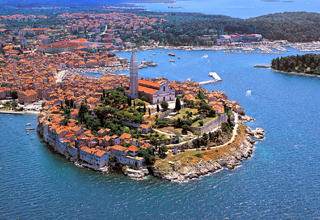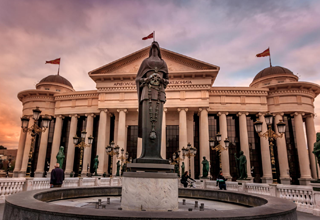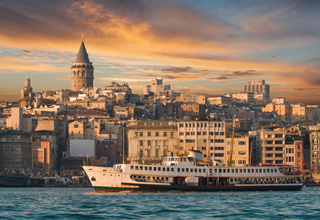Young Europe Orchestra
cOUNTRIES INVITED
Members of the orchestra will be invited from these 8 countries to start up a new musical project.


Country in southern Europe, located in the western part of the Balkan Peninsula on the Strait of Otranto, the southern entrance to the Adriatic Sea. The capital city is Tirana (Tiranë). Albanians refer to themselves as shqiptarë—often taken to mean “sons of eagles,” though it may well refer to “those associated with the shqip language”—and to their country as Shqipëria. They generally consider themselves to be descendants of the ancient Illyrians, who lived in central Europe and migrated southward to the territory of Albania at the beginning of the Bronze Age.
Bosnia and Herzegovina

Country situated in the western Balkan Peninsula of Europe. The larger region of Bosnia occupies the northern and central parts of the country, and Herzegovina occupies the south and southwest. Diverse European and Turkish influences are felt in the cultural life of Bosnia and Herzegovina. There are considerable variations between traditional and modern and between rural and urban culture as well. Family ties are strong, and friendship and neighbourhood networks are well developed. Great value is placed on hospitality, spontaneity, and the gifts of storytelling and wit.

Country located in the northwestern part of the Balkan Peninsula. It is a small yet highly geographically diverse crescent-shaped country. Its capital is Zagreb, located in the north. On Dec. 22, 1990, the constitution of the Republic of Croatia was promulgated. In addition to such classic civil rights as freedom of speech, religion, information, and association, the equality of nationalities is guaranteed in a number of constitutional articles.

Self-declared independent country in the Balkans regionof Europe. The cultural lives of Kosovo’s Albanians and Serbs, although distinctive, bear many resemblances to those of the peoples of Albania and Serbia, respectively. For further information on the cultures of those countries.Traditional Kosovar society, for both Albanians and Serbs, has an important patriarchal tradition, with extended family members often living together in large groups. Family support networks remain very strong, even when some members live outside the country. Most business connections are made through these networks.
North Macedonia

Country of the south-central Balkans. It is bordered to the north by Kosovo and Serbia, to the east by Bulgaria, to the south by Greece, and to the west by Albania. The capital is Skopje.
Great effort has been invested in the support of Macedonian language and culture, not only through education but also through the theatre and other arts as well as the media of mass communication.
Montenegro

Country located in the west-central Balkans at the southern end of the Dinaric Alps. It is bounded by the Adriatic Sea and Croatia (southwest), Bosnia and Herzegovina(northwest), Serbia (northeast), Kosovo (east), and Albania (southeast).Montenegro’s administrative capital is Podgorica, though its cultural centre is the historical capital and older city of Cetinje. For much of the 20th century Montenegro was a part of Yugoslavia, and from 2003 to 2006 it was a component of the federated union of Serbia and Montenegro.

Country in the west-central Balkans. For most of the 20th century, it was a part of Yugoslavia. The capital of Serbia is Belgrade (Beograd), a cosmopolitan city at the confluence of the Danube and Sava rivers; Stari Grad, Belgrade’s old town, is dominated by an ancient fortress called the Kalemegdan and includes well-preserved examples of medieval architecture and some of eastern Europe’s most-renowned restaurants. Serbia’s second city, Novi Sad, lies upstream on the Danube; a cultural and educational centre, it resembles the university towns of nearby Hungary in many respects.
Turkey

Country that occupies a unique geographic position, lying partly in Asia and partly in Europe. Throughout its history it has acted as both a barrier and a bridge between the two continents. Turkey is situated at the crossroads of the Balkans, Caucasus, Middle East, and eastern Mediterranean. It is among the larger countries of the region in terms of territory and population, and its land area is greater than that of any European state. Nearly all of the country is in Asia, comprising the oblong peninsula of Asia Minor—also known as Anatolia (Anadolu). Culturally, as in so many other respects, Turkey sits between East and West, drawing elements from both to produce its own unique blend. The territory that now constitutes the republic has been subject to a striking range of cultural influences; these have left a rich archaeological legacy, still visible in the landscape, from the civilizations of Classical Europe and the Islamic Middle East.
The Orchestra will tour from Balkans to the Eastern Turkey

A unique combination: summertime sun, oodles of history, interesting architecture, incredible wine, delicious seafoods…

Part Balkan, part Mediterranean and rich in Greek, Roman and Ottoman history, Macedonia has a fascinating past and complex national psyche…

A richly historical land with some of the best cuisine you will ever taste, scenery from beaches to mountains and the great city of İstanbul…
Please fill the application form to contact us and become a member of YEO